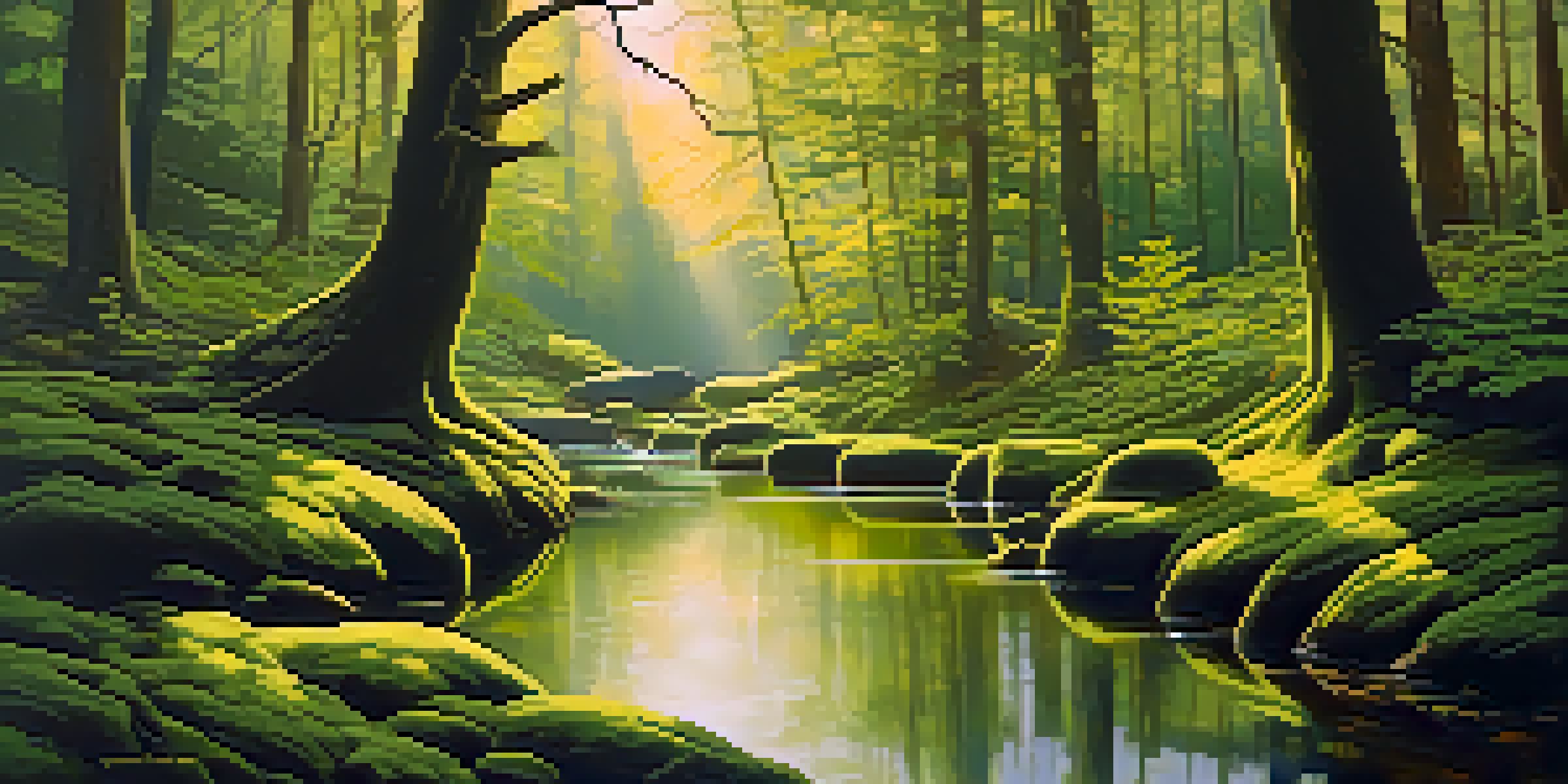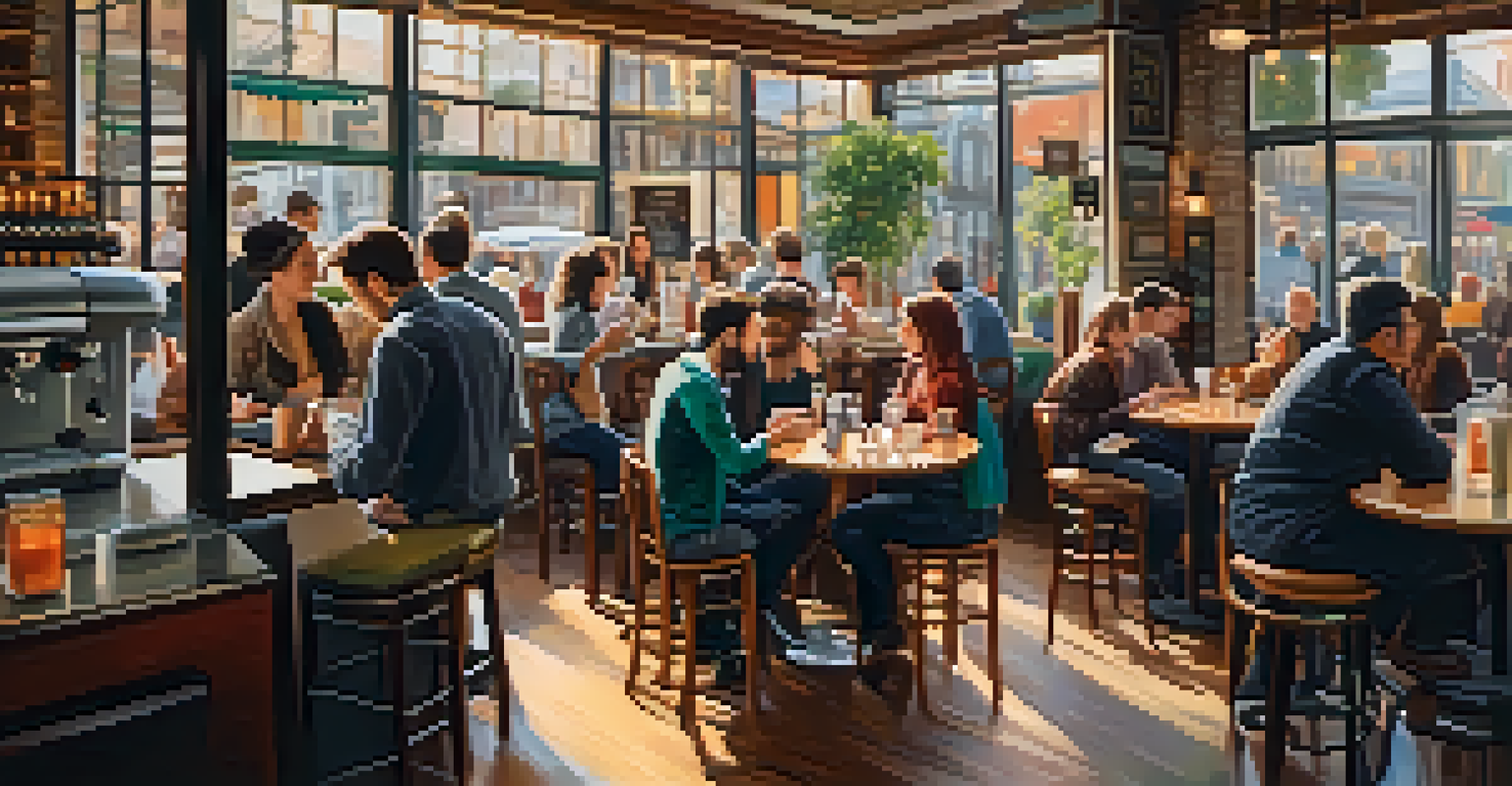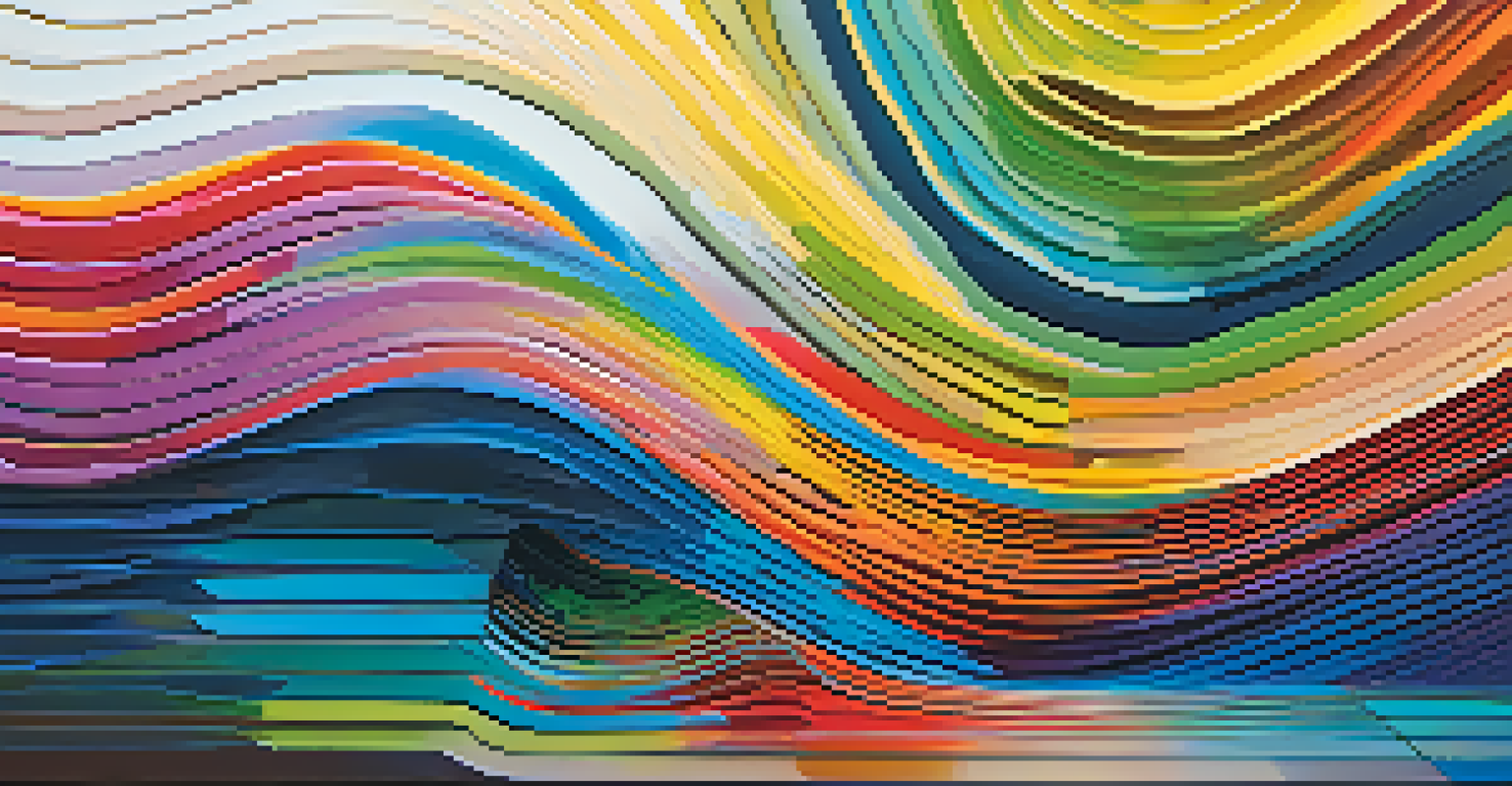Sound Design Techniques: Crafting Unique Auditory Experiences

Understanding the Basics of Sound Design
Sound design is the art of creating and manipulating audio for various media, including films, games, and music. It's not just about making noises; it's about crafting an auditory experience that enhances storytelling and evokes emotions. Think of sound design as the backbone of any audio-visual project, where each sound plays a crucial role in immersing the audience.
Sound is the vocabulary of the film; it is the language of emotion.
At its core, sound design involves several elements, including dialogue, sound effects, and ambiance. Each component contributes to the overall atmosphere, helping to transport listeners into a different world. For example, the sound of rustling leaves can evoke a sense of mystery, while a distant thunderclap can signal impending danger.
Additionally, sound design techniques can vary greatly depending on the medium. In film, for instance, sound designers often use Foley, which is the reproduction of everyday sound effects, to create a more realistic auditory landscape. In video games, however, the focus might shift to creating interactive audio that responds to player actions, enhancing engagement and immersion.
The Importance of Sound Effects in Storytelling
Sound effects play a pivotal role in storytelling, acting as the unsung heroes of a narrative. They help to establish mood, indicate time and place, and can even provide subtle clues about the plot. For example, the sharp crack of a gunshot can heighten tension, while the gentle trickle of water can evoke calmness or nostalgia.

One classic example can be found in horror films, where sound effects are often used to build suspense. The creaking of a door or the sudden thud of a footstep can make audiences jump, intensifying their emotional response. These carefully crafted sounds enhance not only the visual elements but also the feelings and reactions of viewers.
Sound Design Enhances Storytelling
Sound design is essential for creating immersive audio experiences that enhance visual storytelling and evoke emotions.
Moreover, sound effects can help define characters and their journeys. A character's footsteps might sound heavy and deliberate, hinting at their confidence, while another's might be light and hurried, suggesting anxiety. By paying attention to these details, sound designers can deepen the audience's connection to the story.
Creating Atmosphere with Ambient Sounds
Ambient sounds are foundational in creating a sense of place and atmosphere. These background noises, such as the buzz of a city or the chirping of birds in a forest, serve to immerse the audience in a specific environment. Without such layers, even the most stunning visuals can feel flat and disconnected.
The most powerful tool in film is sound, and you have to respect its power.
For instance, imagine a scene set in a bustling café. The clinking of cups, the murmur of conversations, and the hiss of the espresso machine all contribute to a rich auditory tapestry. This layered soundscape invites listeners to feel as if they are part of the environment, enhancing their overall experience.
Furthermore, ambient sounds can also be manipulated to change the perception of a scene. A bright, sunny day can be transformed into a haunting evening with just a few tweaks to the soundscape. By adding echoes or reverb, sound designers can create a feeling of isolation or eeriness, demonstrating the power of sound in shaping mood.
The Role of Music in Sound Design
Music is a critical component of sound design that can evoke emotions more powerfully than sound effects or ambient sounds alone. It sets the tone for a scene, amplifying feelings of joy, sadness, tension, or fear. Think of a movie without its score; it would feel incomplete, lacking the emotional depth that music provides.
For example, consider the iconic score of 'Star Wars.' The music not only enhances the action scenes but also establishes character motifs that resonate with the audience. When the music swells, viewers feel the excitement or dread alongside the characters, creating a more immersive experience.
Silence Amplifies Emotional Impact
Strategic use of silence can create anticipation and elevate emotional responses, making subsequent sounds more impactful.
Additionally, sound designers often collaborate closely with composers to ensure that the music and sound effects blend seamlessly. This collaboration can result in a cohesive audio experience that supports the narrative while enhancing the overall impact. It's a delicate balance, but when done right, it can elevate a project to new heights.
Using Silence to Enhance Impact
While sound is essential in design, the strategic use of silence can be equally powerful. Silence can create anticipation, allowing the audience to process what they've just witnessed or prepare for what’s to come. It's the calm before the storm, where the absence of sound can make the eventual noise more impactful.
A classic example is the use of silence in horror films. A sudden hush before a jump scare can send shivers down the spine, making the subsequent sound even more jarring. This technique plays on the audience's expectations and heightens their emotional response.
Moreover, silence can also serve as a narrative device, allowing for moments of reflection or emotional weight. In character-driven stories, a pause in dialogue can convey unspoken feelings or tension, giving viewers a moment to connect with the characters on a deeper level.
Layering Sounds for Richness and Depth
Layering sounds is a fundamental technique in sound design that adds richness and depth to audio experiences. By combining multiple audio elements, sound designers can create a more complex and engaging soundscape. This method allows for a more immersive experience, where each sound contributes to the overall narrative.
For instance, in a scene set in a busy marketplace, the sounds of vendors calling out, customers chatting, and background music can be layered to create a vibrant atmosphere. Each layer plays a distinct role, yet together they form a cohesive auditory environment that draws the audience in.
Layering Adds Depth to Soundscapes
Layering multiple audio elements creates rich and complex soundscapes, enhancing the overall narrative experience.
Additionally, layering can involve manipulating the volume, pitch, and timing of sounds to achieve the desired effect. By adjusting these elements, sound designers can highlight specific sounds at crucial moments, ensuring that the audience's attention is directed where it matters most.
Exploring Innovative Sound Design Tools
The world of sound design has evolved dramatically with advancements in technology. Today, sound designers have access to a plethora of innovative tools and software that allow for unprecedented creativity. From digital audio workstations (DAWs) to synthesizers, these technologies empower designers to craft unique auditory experiences.
For example, software like Ableton Live and Logic Pro offers a range of features that enable sound manipulation and editing with ease. With these tools, sound designers can experiment with various effects, create custom sounds, and even collaborate with other artists remotely, broadening their creative horizons.

Moreover, new technologies like virtual reality (VR) and spatial audio are opening exciting doors for sound design. These advancements allow for more immersive experiences, where sounds can be positioned in a 3D space, making the audience feel as if they are truly part of the environment. The future of sound design is bright, with endless possibilities for creativity.